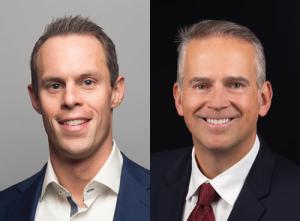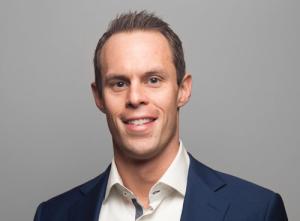NiSource
Shawn Anderson is Chief Strategy and Risk Officer at NiSource. Pablo Vegas is EVP/COO & President of NiSource Utilities, with overall responsibility for NiSource’s gas and electric business segments.
How do today's natural gas utilities find the right balance, rigorously addressing ESG priorities while continuing to meet the needs of the communities they serve via gas utility service? In the conversations below, leaders from CenterPoint Energy, Eversource, NiSource, NW Natural, and Sempra Energy (both at San Diego Gas & Electric and at the parent) take on directly how they are managing that balance.

PUF's Steve Mitnick: There has been a national journey about decarbonizing the economy. Now that we are in 2021, what's your roadmap?
Pablo Vegas: Our perspective is as we shift to a new energy paradigm, doing so is a complex process that's going to have to balance the needs of all the stakeholders. We've got customers, local regulators, local legislators, state legislators, and federal policymakers. Also, we've got employees.
The approach we're taking at NiSource is to engage with these stakeholders to figure out what's the right path forward within each state and for the communities we're serving with the priority of putting people first.
The way we talk about this energy transition is as a people-centric energy transition because this is not about replacing coal plants. It's not about just building solar farms and wind farms.
 Shawn Anderson: The natural gas distribution system is already positioned to support that low-cost transport for renewable natural gas, hydrogen, and into other low carbon fuels.
Shawn Anderson: The natural gas distribution system is already positioned to support that low-cost transport for renewable natural gas, hydrogen, and into other low carbon fuels.
This is about the people that utilize the energy economy to live, work, and to support the communities that we serve. We need to consider what are the various needs and viewpoints of these stakeholders.
We need to design a fair, sensible, and effective energy strategy that's going to address all these diverse requirements, thinking ahead, not just three, four, or five years, but ten, twenty, or thirty years.
Supporting these people also means reviewing what the future workforce needs are going to be in our company to figure out how to help workers who are going to be affected by this transition, how they're going to work in this new energy model.
That could be through internal placement or retraining with partnerships. What we're doing at NiSource is a case in point, where we're a fully regulated natural gas and electric provider. We serve nearly four million customers in Ohio, Indiana, Kentucky, Pennsylvania, Maryland, and Virginia.
 Pablo Vegas: We’re going to have to tailor solutions and blend them in a way that’s going to meet the needs of communities, make sure our customers are not left behind, and we have equitable outcomes.
Pablo Vegas: We’re going to have to tailor solutions and blend them in a way that’s going to meet the needs of communities, make sure our customers are not left behind, and we have equitable outcomes.
In Indiana, we've been working with stakeholders on an electric transition. We've got a large, diverse electric fleet in Indiana. We're trying to make sure all parties in this transition derive equitable benefit from our shift to a cleaner and more sustainable way of generating electricity.
We have operations that are close to abundant, low-cost natural gas resources. On the natural gas side across all six states, we're looking at ways to decarbonize, looking at options like blending renewable natural gas, at the potential for hydrogen, research into hydrogen and how that could play.
This path that we've started, is going to help inform our path forward. The bottom line, is we're going to have to tailor solutions and blend them in a way that's going to meet the needs of communities, make sure our customers are not left behind, and we have equitable outcomes as part of a just transition.
U.S. utilities today are uniquely positioned to help facilitate this energy transition because we've been a part of local communities for decades and centuries in some cases. We have the local infrastructure and knowledge.
PUF: Shawn, where's gas going and how do you think about that strategically?
Shawn Anderson: When we think about the need for energy in full, what can come together to create the energy we need in the future? Ensuring reliability for customers and communities is central to the responsibilities of a utility.
For decades, coal fire generation has filled that void. However, as we see more coal fired generation retirements, the need to replace that capacity is going to continue to grow.
The firm energy capacity natural gas provides can ensure that reliability remains high, and it can be there to deliver for customers and communities. Natural gas is an affordable and available source for electric generation, helps moderate customer bills, and helps the energy transition.
These factors will underpin the importance that natural gas will continue to play to help the nation achieve its decarbonization goals. While new lower cost carbon energy technologies emerge, the natural gas distribution system is already positioned to support that low-cost transport for renewable natural gas, hydrogen, and into other low carbon fuels.
PUF: Pablo, talk about infrastructure, investment you are making, and what you see ahead.
Pablo Vegas: Infrastructure has always been at the core of the conversation around the needs of the energy infrastructure and the energy system overall. The questions that are coming up a lot are, how do we do this in this transition? Do we want to be focusing on local, renewable energy?
Is that the best option as we go through this energy transition? Is that the best solution? In many cases, the answer can be yes, where you have both an affordable and a sufficient supply, a local, renewable energy that can fit into a grid management model.
That's a great alternative and solution. As we see the transit continue the shutdown of coal facilities and to try to decarbonize the electric grid, the potential to use local, renewable resources is ideal.
What has to be maintained during all this is to balance out the impact on the environment because that's a key consideration. You also have to factor in customer economics. Affordability of energy is core to the health of a community.
The third aspect is resilience. The system has to be reliable. When you balance out the resilience, economics, and environmental impact, that leads you to a diverse set of resources you want to think about to run the energy system.
The key is around planning an infrastructure investment profile that's diverse, that's going to be able to meet those three equations and keep them in balance. As we build that energy infrastructure of tomorrow, we need to continue the distribution of the transportation of fuels like natural gas, in addition to renewables and new technologies like storage, and look into things like hydrogen.
We need to keep that diversity plentiful as we look to build that next energy infrastructure. The only way to do that is to make sure we're agile, open to that diversification, and we focus on promoting innovation.
PUF: Shawn, how do you look at the cost, which goes to affordability, which is key for any utility?
Shawn Anderson: It's aligning technologies with the states and resource characteristics that can keep cost affordable for customers. Ultimately, the application of all these technologies could be cost effective and environmentally effective solutions. But aligning that with the state-based resources to maximize the value of that attribute will help keep that cost down and affordability high for customers.
Ultimately you link things like solar and wind where it's more prevalent and you drive that cost down so infrastructure will then be priced at a more effective and efficient way to meet the needs of the communities. Even natural gas as a potential feedstock to create hydrogen could help reduce the cost for hydrogen as an emerging technology for that technology to grow to being ubiquitous.
All of this points to the need for significant amounts of investment in the energy systems of today to reach that sustainable carbon free system in the future. But aligning it with the state-based resources will help keep that cost down for customers while meeting the resiliency and reliability needs for the energy content of the future.
PUF: Pablo, what's your endpoint or goal? Then with your constituencies, how do you explain that diversity, and the benefit that provides when you get all these pressures coming?
Pablo Vegas: Any system that we talk about, whether it's commercial, economic, ecological, or social, is always strengthened by diversity. We're fortunate there is a diverse collection of solid, clean energy options available in our energy future, not just in the service territories that NiSource serves, but in the United States broadly.
Diversity of energy sources is critical to the resiliency of that energy economy. We need to make sure our energy needs are met via responsive energy sources, diverse, and dynamic.
Those are the characteristics that are going to work best. Customers are going to be best served by providers that continue to explore different ways of generating, storing, and distributing energy, looking at options that are green as well as traditional.
It comes down to the energy system is a complex system. You have to factor in not only what you need on a beautiful day, but on the hottest days in the summer, the coldest days in the winter.
That's where diversity fits the bill because you get clean, consistent energy through renewable sources through periods of time. You can have dispatchable energy that can meet those peaks in a cost effective and efficient way.
You can support the local communities through the jobs those investments create, as well as through the investment in the infrastructure. It provides economic strength that helps grow the communities we serve.
Northern Indiana had some good coal plants during its day. It could be a tremendous impact to the communities, to the employees within the company, when they are shut down if it's not done responsibly or planfully. That's why smart transitions that are planned out, with the right amount of time to do so, are the fairest and most just ways to change.
You can't do it overnight. You've got to do it responsibly and safely. You got to keep the grid reliable. That's the way we're looking at our planning horizon.
PUF: What's the role of utilities and what's the role of government as far as what should they be thinking and doing to support what you are trying to do, and what all companies are trying to do?
Shawn Anderson: The focus in any case should be putting the needs of people first. When we or others talk about a just transition approach, it means we're taking an approach to ensure that the affected people are considered by those making decisions.
In our role as a utility, we can ensure any discussion of how we source, produce, reuse energy, brings all those viewpoints into the conversation. Across all the states and communities we serve, through all those stakeholders we just covered, that's what we're going to do.
In doing so, we can ensure communities enjoy the best, most productive outcome from our nation's transition to cleaner energy sources and ensure equally in the benefits of a new, safe, reliable, affordable, and sustainable energy model in the century ahead.
ESG Naturally conversations:

